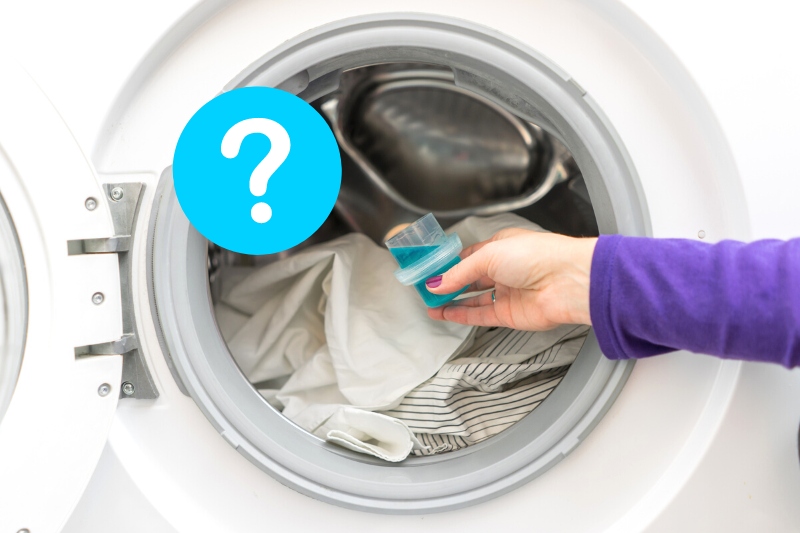If your clothes are feeling a little stiff and crunchy, you might be tempted to throw some fabric softener directly into your washer’s drum, with the hope of the product softening up the laundry.
But should you be doing this?
Ideally, you shouldn’t add fabric softener straight into a washing machine’s drum because it needs to be diluted before it makes contact with any kind of laundry.
You should, therefore, either add the correct dose of fabric conditioner to your washer’s drawer, or add a measure of fabric softener manually to your washer when it’s running through a rinse cycle (this way it gets diluted by the water).
What would happen if you added fabric softener straight into the washing machine’s drum?
Interestingly, if you were to add fabric conditioner straight into your washer’s drum and you ran a normal cycle with detergent, your clothes might not be cleaned effectively.
You see when you start the wash cycle, the softener coats all the laundry in chemicals, and this, in turn, means that the detergent can’t penetrate deep into the material’s fibres to clear out the dirt properly.
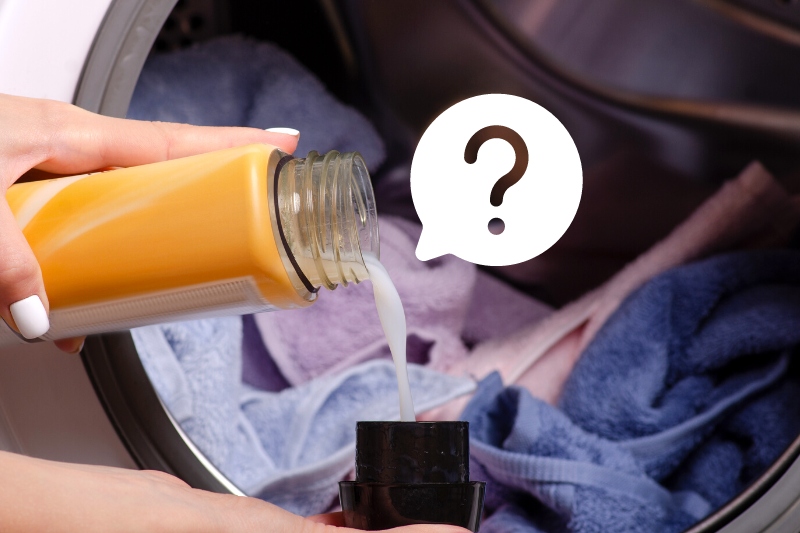
Fabric softener has also been known to stain clothes when it is poured directly onto them.
In addition to this, if you just pour fabric conditioner into a washing machine’s drum, the liquid might not be evenly distributed amongst all the laundry in the drum.
Some items might be exposed to a lot of fabric softener, while other garments might not come into contact with much at all. In the end, you’d get a mixed-up bundle of laundry that would be half smooth and half crunchy.
Further to this, pouring a measure of fabric conditioner onto clothes can weaken the fibres of the material. And if clothes are continuously exposed to ‘raw’ softener they will become very weak and will deteriorate much quicker.
Let’s find out how you use fabric softener in a washing machine.
Note: ‘Fabric softener’ and ‘fabric conditioner’ are different names for the same product.
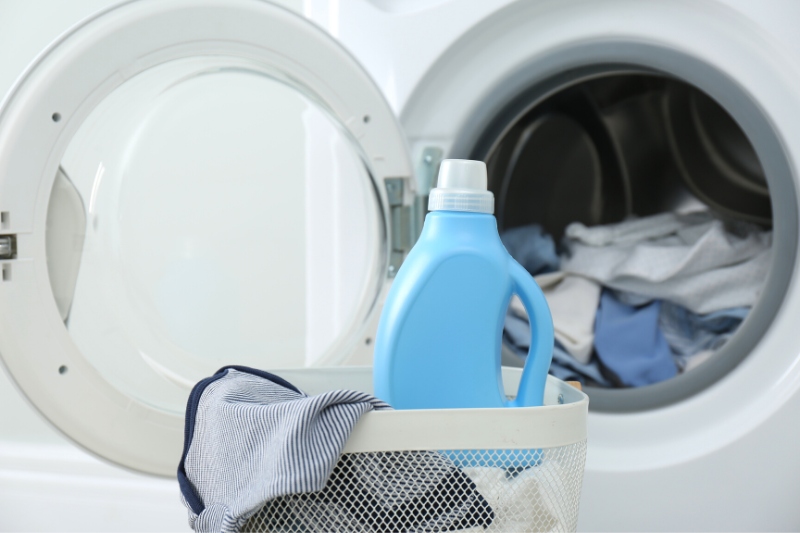
How to Use Fabric Softener in a Washing Machine
Fabric conditioner has been making clothes feel silky smooth, smell extra pungent, and be static-free for decades.
But to reap the rewards of the product, you must use it wisely! Namely, you’ve got to add it to your washing machine’s drawer or stick it in your appliance at exactly the right time.
Read on to learn more.
How to use fabric softener in a front-loading washing machine
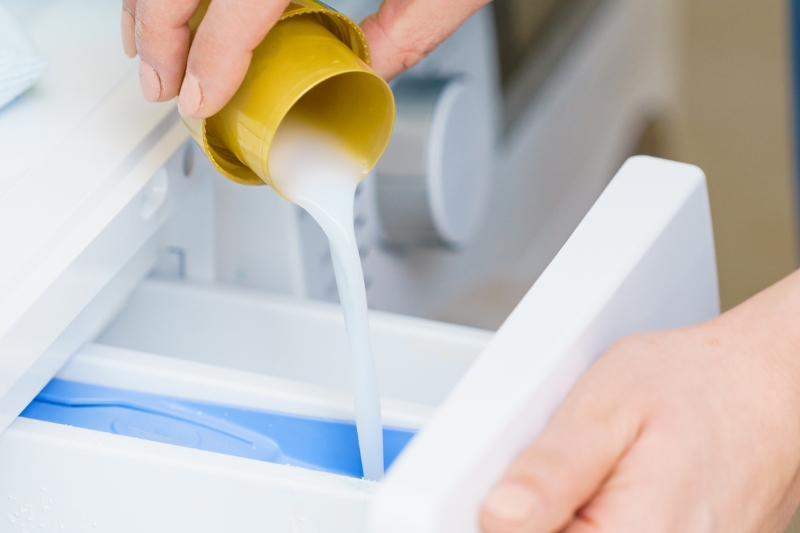
If you have a front-loading washing machine at home, you’ll be able to pull out the dispenser drawer from it.
Once you’ve opened the drawer you will see three compartments, all of which serve their own purpose and are all labelled.
You will need to add the fabric conditioner to the compartment that is labelled as ‘3’, with a star symbol or a flower symbol.
If you cannot find one of these symbols, have a quick look at your appliance’s user manual, just in case the manufacturer has decided to use different symbols.
Once you’ve added the correct dose of fabric conditioner to the right compartment, you can add your detergent, close the drawer and start the washing cycle.
Your washing machine will take over from this point and will release the softener from the drawer at the correct time.
How to use fabric softener in a top-loading washing machine
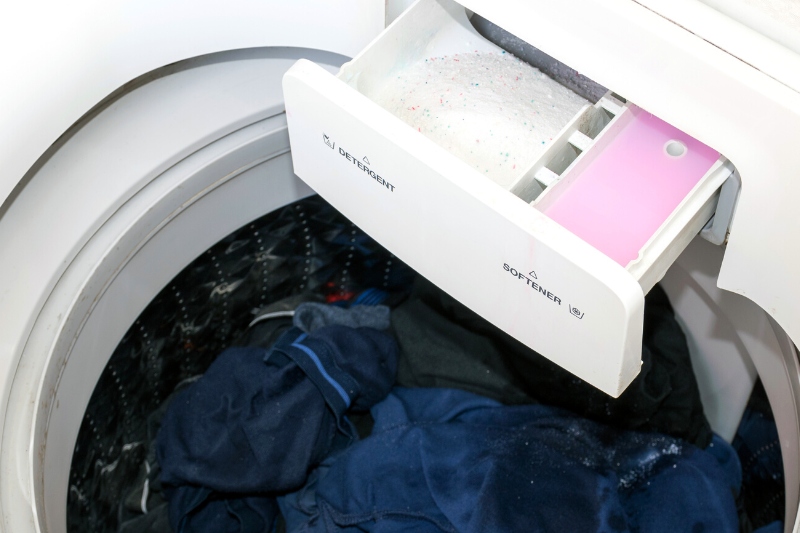
On top loading washing machines there’s sometimes a fabric conditioner compartment but not always.
If there is a compartment, you can add a measure of fabric softener into it and the machine will release the liquid at the correct time.
If there isn’t a designated space where you can put softener, add a dose of fabric softener to your washer during the rinse cycle.
How to use fabric softener when hand washing laundry

It is also possible to use fabric conditioner when hand washing laundry. In this case, you clean your clothes in a bucket of warm water and detergent as normal, and then you rinse and drain the dirty water away.
When you’ve done this, you need to mix a single tablespoon of fabric softener in a cupful of water, before adding the mixture to a fresh bucket full of warm water.
Ideally, you should soak your garments for about five minutes in the water before rinsing and drying them.
Tips When Using Fabric Softener
Below you’ll find a handful of points you should keep in mind when using fabric conditioner. Try and stick to all of the tips when using fabric conditioner as this will protect your laundry and yourself.
Check care labels
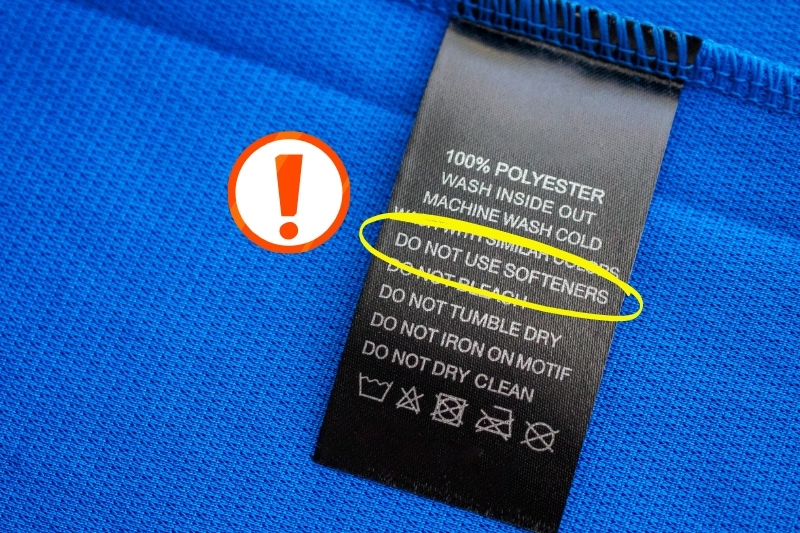
You must read the care tags on your clothes to make sure they’re allowed to come into contact with fabric softener.
Unfortunately, fabric conditioners cannot be used on all types of clothing/items, and if you were to expose said outfits/materials to this product they might end up damaged.
Clothes and laundry that shouldn’t come into contact with fabric softener, include:
- Wool
- Silk
- Baby clothes
- Sportswear
- Towels
Read the instructions on the fabric softeners packaging

When using fabric conditioner, even if you’ve used the same one for years, you should read the packaging on the bottle to see how to use the product correctly.
Doses sometimes change, as do the usage instructions, and it’s your job to make a habit of reading what the bottle says and adhering to the information.
If you don’t stick to what the packaging says, you could use too much fabric softener, you might not use enough, or your laundry could be caked in softener residue!
It’s far from ideal, to say the least! So, don’t skip this stage.
Stick to the dose stipulated
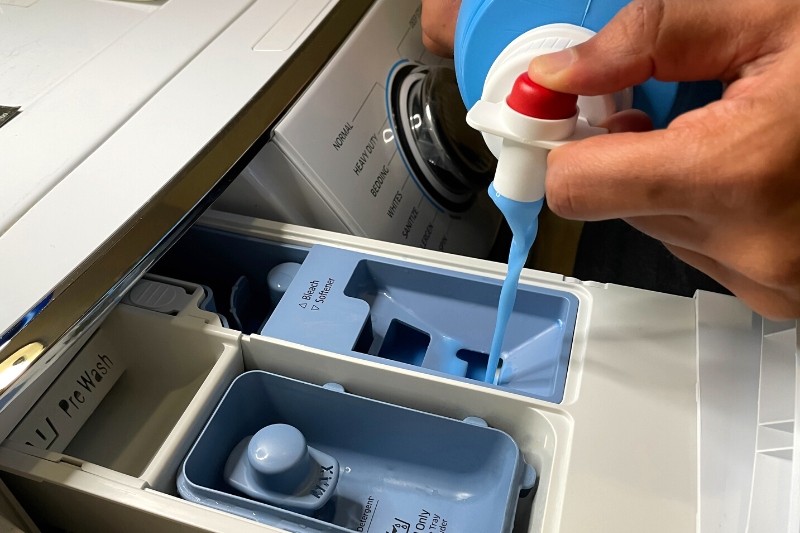
As a follow on to the point above, once you’ve read the instructions on the bottle, you need to stick to what’s been said.
If you use too much fabric softener your laundry might lose its absorbency, for example. But if you use too little your clothes might not feel soft or smell pleasing to you.
Don’t be afraid to go back to check the instructions on the bottle!
Don’t use it on laundry that’s designed to absorb water
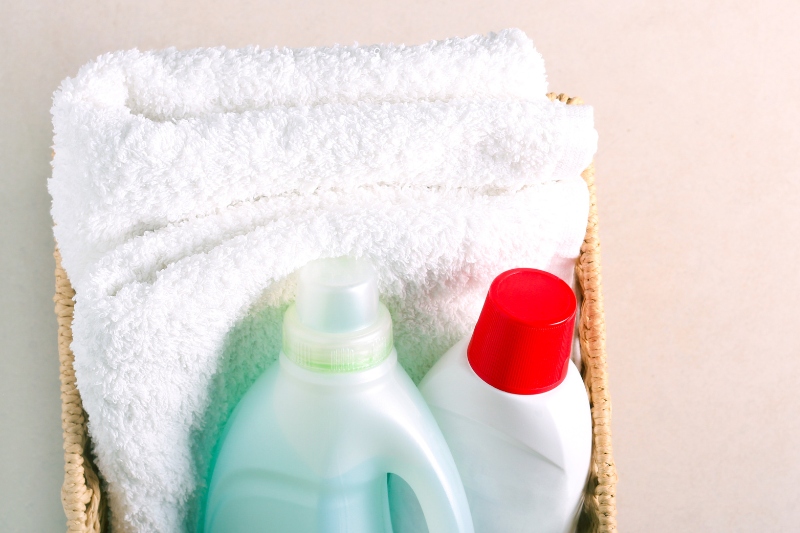
Some people swear by fabric conditioners and will use them on every single piece of laundry. However, there are some items that softeners don’t quite agree with, towels are one of these.
The main purpose of a towel is to absorb moisture from our bodies after we’ve been in the shower or swimming pool. Towels essentially help us to dry off very quickly so we can go and get dressed.
However, if you expose towels to fabric softener, they start to lose their absorbency and they don’t pick up the moisture from our bodies as effectively.
If you continuously expose towels to fabric conditioners, and if you use it excessively, a towel can become ineffective at removing moisture.
This is why in a lot of cases it’s better to avoid using fabric softener around towels. And if you have to add fabric conditioner to a towel wash, only do it now and again, and not every single time.
Be mindful of allergies
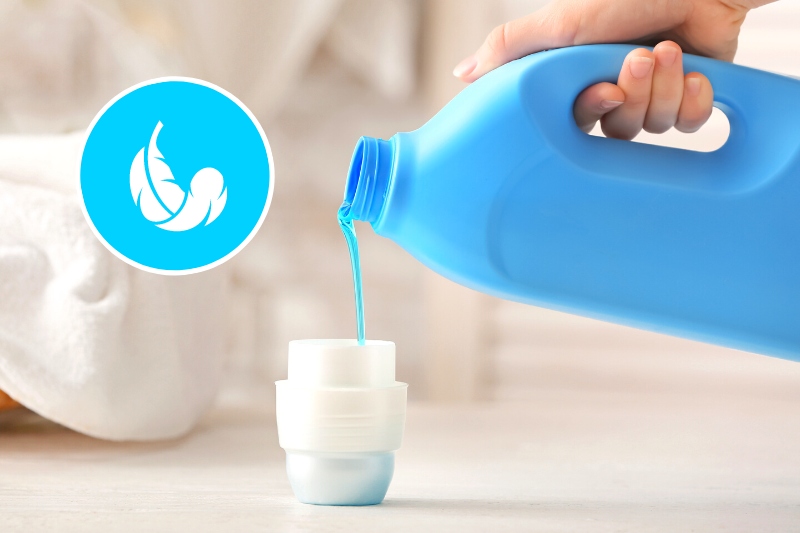
In addition to all of the above, before you use fabric softener you must make sure that it will not have any adverse effects on those living in your home.
Some, but not all, softeners can cause severe allergic reactions and rashes on people’s skin.
So, if you know for definite that someone could suffer at the hand of a fabric conditioner, you should find another way of softening and scenting your laundry.

Bethan has a passion for exploring, reading, cooking and gardening! When she’s not creating culinary delights for her family, she’s concocting potions to keep her house clean!
